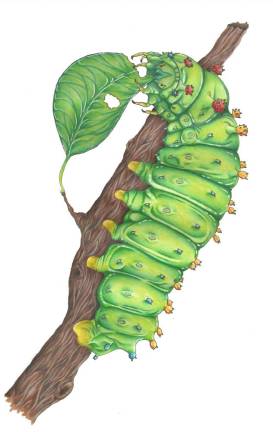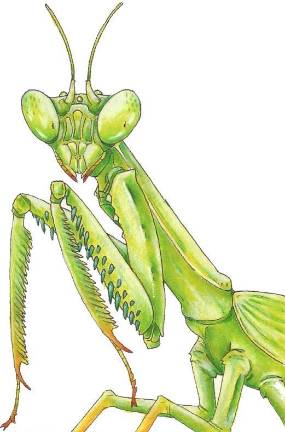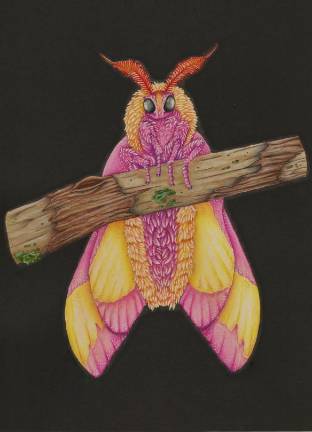We should all be bug people. (Yes, that means you.)
An organic farmer on why the insect apocalypse matters



Are you old enough to remember splattered bugs on your car’s windshield? Back in the day — let’s say 40 or 50 years ago — it was common to pull over after driving for a couple of hours to clean off the dead bodies of unlucky insects that crossed your path. That seldom happens today, even though we drive longer distances and at greater speeds.
As a teenager, growing up in New Zealand in the mid-60’s, I had a motorbike. After being hit in the face by a couple of beetles at 50 mph, I understood why a helmet with a visor was a good idea. Believe me, the little buggers delivered a very sharp smack. I don’t ride a motorbike anymore but doubt that a visor is so critical now, except to keep out rain.
In case you haven’t noticed, there are fewer insects flying around today than in times past. Most of us of a certain age are vaguely aware of this, but don’t pay it much heed. Why should we? The pesky little creatures, those that remain, can still occasionally fly in your face or, worse, up your pants or under your dress. Discounting mosquitoes, whose numbers haven’t dropped much, they might even bite or sting you. An absence of insects is something few of us would think to complain about.
Yet there are a handful of people, especially in Western Europe and the UK, who are fascinated by insects and devote much time to cataloging and studying them. Often these “bug people” hang out together and form amateur entomological societies.
It was just such a group in the West German town of Krefeld that warned us that insect numbers might be plummeting faster than expected. They published a report in 2017 documenting a 75% decline in “the flying insect community” – including moths, beetles, wild bees and butterflies – over the previous 27 years. Their study was conducted in natural preserves near their town. The findings of the Krefeld entomological society, which has been in existence since 1905, prompted both amateur and professional entomologists elsewhere to take a closer look. Soon it became clear that over the past 50 years, arthropod populations – which include insects and also spiders, mites, centipedes, scorpions and the like – have dropped precipitously from the arctic to the tropics, perhaps signaling a collapse of ecosystems worldwide.
Whether the die-off has arrived in North America remains a foreboding question that has sparked a spate of conflicting studies. A report last summer found that, despite splashy “insect apocalypse” headlines, no net change in insect populations had occurred here, despite fluctuations in individual populations. “These results don’t mean that insects are fine,” wrote lead author Matthew Moran, an entomology professor at the University of Georgia, in a piece in the Washington Post. “Indeed, I believe there is good evidence that some species of insects are in decline and in danger of extinction. But our findings indicate that, overall, the idea of large-scale insect declines remains an open question.”
And yet, if our eyes – and windshields – are to be believed, there are fewer bugs about than there used to be. Why is this happening and does it really matter? Let’s start with the “why?”
There are several probable reasons. A big one is human population growth and increasing consumption. In the last half-century we humans have more than doubled our numbers and, individually, we eat more than we used to. An extra three or four billion mouths to feed has led to the conversion of wild, semi-wild and marginal lands (all habitat for insects and other living creatures) to agricultural use. This mostly takes the form of intensive grazing or crop monoculture and usually involves the removal of even small islands of trees and wild plants that would provide some refuge for insects.
To increase yields (at least in the short-term) and decrease human labor, much of the world’s cropland is routinely sprayed with neurotoxic insecticides broadly known as neonicotinoids. Coupled with the conversion of wild lands to agricultural use, this is a double whammy for insects. First, they lose habitat. Then, if they go anywhere near farmland, they get sprayed.
The widespread use of herbicides also exacts a toll. These products don’t kill insects directly but do kill weeds and wild plants that are often crucial to insects’ feeding and life cycles. The drastic reduction in Monarch butterfly numbers is, at least in part, due to the herbicide Roundup, which kills milkweed along with just about every other plant it encounters that is not genetically engineered to withstand it. Milkweed is vital for monarchs. They rely on it for both feeding and breeding.
Deforestation, especially in tropical and semi-tropical regions of the world, also wreaks havoc on insects and their habitat. Entomologists tell us that every year in Amazonia we are losing countless species of insects that haven’t even been properly identified and named. According to a report published in the journal Biological Conservation, the extinction rate among insects is eight times faster than that of mammals, birds and reptiles. The authors of this report presented their findings after analyzing 73 studies looking at insect decline.
Climate change and desertification also negatively impact certain species of insects. Just a couple of degrees increase in temperature can interfere with feeding and reproductive cycles, while prolonged heat waves sometimes cause mass die-offs.
With so many pressing environmental issues to deal with these days, not to mention the devastating pandemic, is a world with a lot less insects, or possibly no insects at all, really something to worry about? Yes, it is. For one thing, 75% of the world’s food crops depend on insect pollinators. Without their services, global food production could drop catastrophically.
We’re already seeing it. The loss of bees and other pollinating insects, due to heavy pesticide spraying in Maoxian County in China, forced apple growers to hire humans to pollinate their trees by hand — a slow and costly process that resulted in decreased apple production. To pollinate their crops, California almond growers depend on an unstable supply of honey bees imported from apiarists across the country. These are jobs that, not so long ago, native bees and other insects were doing for free.
If you happen to be an insect-eating spider, bird, frog, lizard, bat or small mammal that dines on insects, when there is less to eat, there will also be less of you. The same goes for several species of fresh water fish, especially those favored by anglers. Perhaps older birdwatchers will sense this corollary decline in other species when they notice there are fewer insectivorous birds – like wrens, warblers, orioles, bluebirds, tree swallows – in their backyards.
There is also the matter of decomposition. Every living thing dies and is broken down into simple organic compounds which provide food for plants. Insects and other arthropods, along with saprophytic fungi and bacteria, are great consumers and recyclers of deceased animal and vegetative remains. They are the agents of renewal. They turn death into life and keep the planet fecund and fresh. Without them, it could become a putrid and foul smelling place.
More generally, and more alarmingly, insects are at the base of the terrestrial food/energy pyramid. Species higher up the pyramid depend on the mass and health of those below them. Aside from plants, fungi, bacteria and some single cell organisms, insects are the most abundant species on the planet. According to scientists, they outweigh humans by approximately seventeen times. Or they did! They are essential to the proper functioning of the planet’s terrestrial ecosystems. If they continue to disappear, the smaller layers of the pyramid of life that depend on them will likely crumble.
Is there anything we can do? Yes, little steps in our own lives can make a difference. For starters, a change in attitude toward insects and their various and wondrous ways would help. Beyond that, here’s a quick list of actions we can take. Shun pesticides and herbicides. Buy food produced using organic methods. Plant native trees and shrubs that provide havens for insects. Convert a portion of lawn into meadow for native wild flowers and grasses. Get rid of bug zappers. Advocate for the preservation of wild and natural places. Ultimately, it comes down to allowing Mother Nature a little more space to perform her vital functions.
And it wouldn’t hurt to memorize the words of the globally esteemed American biologist and naturalist, E. O. Wilson. “Insects,” he said, “are the little things that run the natural world.”
Farmer and auther Keith Stewart just hung up the hoe after 34 years of growing organic vegetables in Greenville, NY